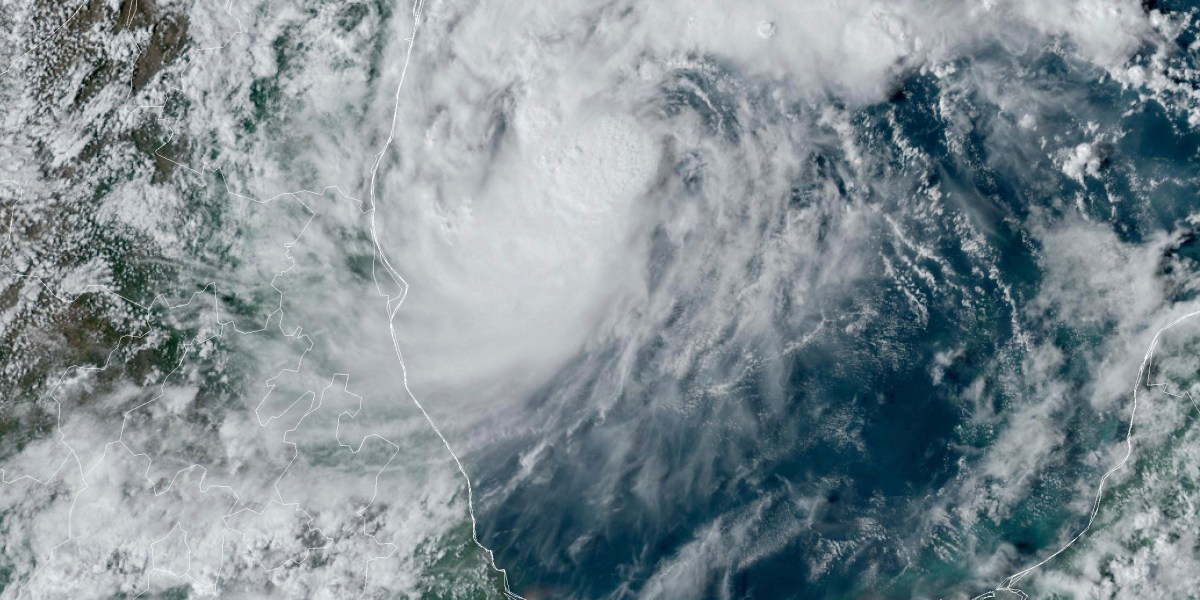
People across Florida were given notice Sunday that Milton, for now just a tropical storm off the coast of Mexico, could intensify rapidly into a major hurricane before slamming midweek into the storm-ravaged Gulf Coast.
Tropical Storm Milton’s center was about 860 miles (1,385 kilometers) west-southwest of Tampa, Florida, early Sunday, heading east at 5 mph (7 kph) with maximum sustained winds of 60 mph (95 kph), the National Hurricane Center in Miami said.
“Milton is moving slowly but is expected to strengthen rapidly,” the center said. “There is increasing confidence that a powerful hurricane with life-threatening hazards will be affecting portions of the Florida west coast around the middle of this week.”
Florida Gov. Ron DeSantis said Sunday that while it remains to be seen just where Milton will strike, it’s clear that Florida is going to be hit hard — “I don’t think there’s any scenario where we don’t have major impacts at this point.”
“You have time to prepare — all day today, all day Monday, probably all day Tuesday to be sure your hurricane preparedness plan is in place,” the governor said. “Know your evacuation zone — there will be mandatory and voluntary evacuations.”
DeSantis said as many as 4,000 National Guard troops are helping the Florida Division of Emergency Management and the Florida Department of Transportation to remove debris, and he declared a state of emergency in 35 counties ahead of Milton. He said Floridians should prepare for more power outages and disruption.
“All available state assets … are being marshaled to help remove debris,” DeSantis said. “We’re going 24-7 … it’s all hands on deck.”
FEMA Administrator Deanne Criswell defended her agency’s response to the destruction wrought by Hurricane Helene after Republicans’ false claims, amplified by former President Donald Trump, created a frenzy of misinformation across devastated communities.
“This kind of rhetoric is not helpful to people and it’s really a shame we’re putting politics ahead of helping people,” Criswell told ABC’s George Stephanopoulos. It’s created fear and mistrust among residents against the thousands of FEMA employees and volunteers on the ground across the southeast, she said.
Despite this, Criswell said the agency is already preparing for Milton, well before it’s clear exactly where it will move across the Florida peninsula this week. “We’re working with the state there to understand what their requirements are going to be, so we can have those in place before it makes landfall,” she said.
The hurricane center said Mexico’s Yucatan peninsula, the Florida Peninsula, the Florida Keys and the northwestern Bahamas should monitor the system’s progress. Heavy rainfall was expected Sunday ahead of the storm itself, and will likely then combine with Milton’s rainfall to flood waterways and streets in Florida, where forecasters said up to a foot (30 centimeters) of rain could fall in places through Wednesday night.
“There is an increasing risk of life-threatening storm surge and wind impacts for portions of the west coast of the Florida Peninsula beginning late Tuesday or Wednesday. Residents in these areas should ensure they have their hurricane plan in place, follow any advice given by local officials, and check back for updates to the forecast,” the center said.
The Atlantic hurricane season has become more active as rescuers in the U.S. Southeast continue to search for people unaccounted for in the wake of Hurricane Helene, which left a huge trail of death and catastrophic damage from Florida into the Appalachian mountains.
Hurricane Kirk diminished to a Category 2 hurricane in the open Atlantic early, with top winds of 105 mph (165 kph), sending large swells and “life-threatening surf and rip current conditions” to Bermuda and northward along the U.S. and Canadian coasts, the center said. Hurricane Leslie also was moving northwest over the open Atlantic, with top winds of 85 mph (140 kph) but posing no threats to land.

